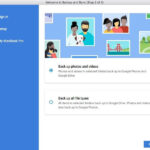Finding a box of old film negatives can feel like uncovering a treasure chest of forgotten moments. These unassuming strips hold precious memories, just waiting to be brought back to life. But if you’re holding a pile of negatives, you might be wondering, “where can I actually get these developed?” It’s a common question, and thankfully, there are several excellent options to transform those negatives into photos you can enjoy and share. Let’s explore the best ways to develop your photo negatives and unlock the stories they hold.
Option 1: The Classic Approach – Professional Photo Labs
One of the most straightforward answers to “Where To Get Photo Negatives Developed?” is to visit a professional photo lab. Photo labs have been the go-to for film development for decades, and many still offer this service today. These labs employ skilled technicians who understand the nuances of film processing and can deliver high-quality prints from your negatives.
Pros of using a photo lab:
- Expertise: Labs have the right equipment and experienced staff for proper development.
- Quality Prints: You can expect professional-grade prints in various sizes and finishes.
- Convenience (local labs): For some, a local lab offers the ease of dropping off and picking up in person.
Cons of using a photo lab:
- Cost: Professional development can be more expensive than DIY options.
- Turnaround Time: It might take a few days or even weeks to get your developed photos back.
- Finding a Lab: Local photo labs are becoming less common, requiring some research to find a reputable one.
If you choose this route, search online for “photo negative development near me” or “film processing services” to locate labs in your area. You can also inquire at camera stores, as some may offer development services or know of local labs.
Option 2: Do-It-Yourself – Scanning Negatives at Home
For those who are tech-savvy and enjoy a hands-on approach, scanning negatives at home is a viable option. This method allows you to digitize your negatives yourself, giving you control over the process and potentially saving money in the long run. To scan negatives at home, you’ll need a film scanner or a flatbed scanner with a transparency adapter.
Pros of scanning at home:
- Control: You manage the entire process from start to finish.
- Cost-Effective (long term): If you have many negatives to process, the initial scanner investment can pay off.
- Digital Files: You get digital images that are easy to share, edit, and archive.
Cons of scanning at home:
- Equipment Cost: Purchasing a good quality film scanner can be expensive.
- Time Investment: Scanning negatives can be time-consuming, especially for large collections.
- Learning Curve: You’ll need to learn how to use the scanner and image editing software effectively.
- Quality Limitations (with basic scanners): The quality may not match professional digitization services, especially with entry-level scanners.
Numerous online tutorials and resources can guide you through the process of scanning negatives at home. Brands like Epson, Canon, and Plustek offer scanners suitable for film and negative digitization.
Option 3: The Hassle-Free Solution – Professional Digitizing Services
If you’re looking for the highest quality results with minimal effort, professional negative digitizing services are an excellent choice. These services specialize in converting film negatives into digital formats, often using high-end equipment and expert technicians to ensure optimal image quality and preservation. Services like Kodak Digitizing offer a convenient way to send in your negatives and receive back digitized images on various media.
Pros of professional digitizing services:
- High Quality: Professional services use advanced equipment for superior image quality and resolution.
- Convenience: They handle the entire process, saving you time and effort.
- Preservation: Digitization protects your memories from physical degradation over time.
- Additional Services: Many offer options like photo enhancement, cloud storage, and various output formats.
Cons of professional digitizing services:
- Cost: Generally more expensive than DIY scanning, but competitive with professional lab development when considering digital output.
- Turnaround Time: Can vary depending on the service and the size of your order.
- Shipping: You’ll need to ship your negatives to the service provider.
When choosing a digitizing service, consider factors like image resolution, file formats offered, security of your originals, and customer reviews. Kodak Digitizing is a reputable option known for its quality and ease of use.
Conclusion: Choose the Best Option for Your Needs
So, “where to get photo negatives developed?” The answer depends on your priorities. If you value tradition and physical prints, a photo lab is a solid choice. If you prefer control and digital files, scanning at home is an option, albeit with a learning curve and time commitment. However, for the best balance of quality, convenience, and long-term preservation, professional digitizing services like Kodak Digitizing are often the most effective solution.
Ultimately, the best method is the one that gets your precious memories out of those negatives and into a format you can easily enjoy and share for years to come.
